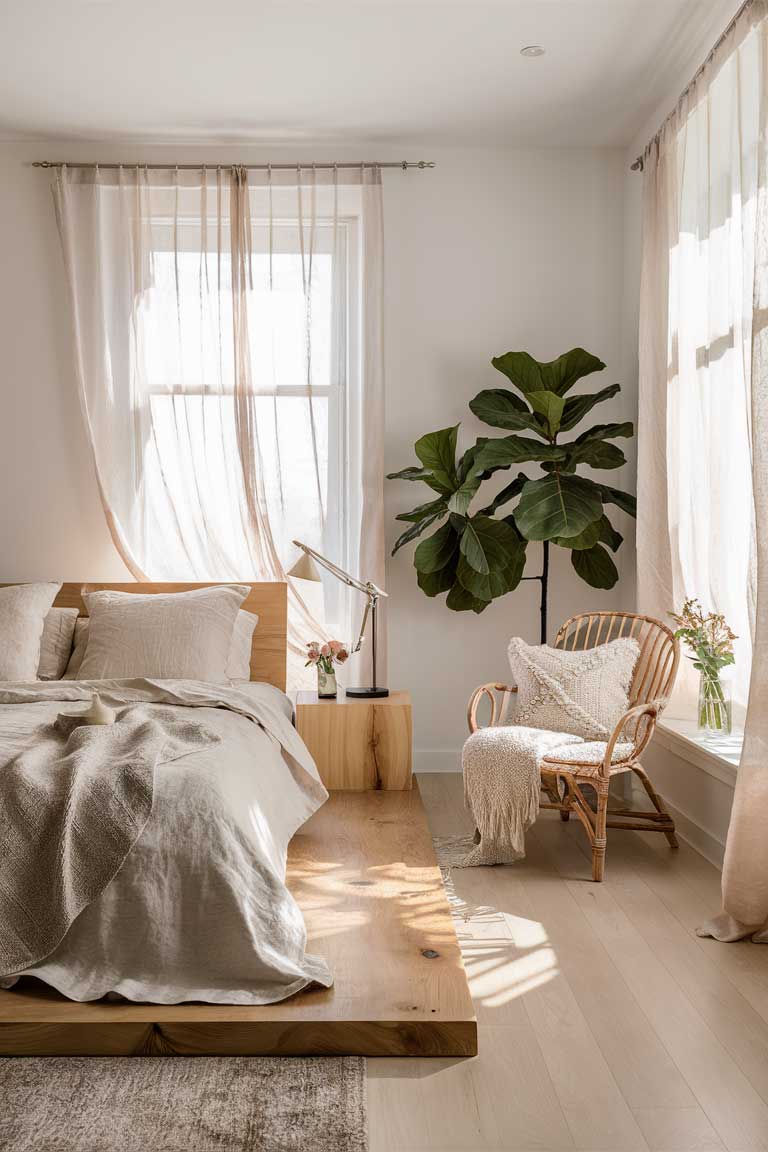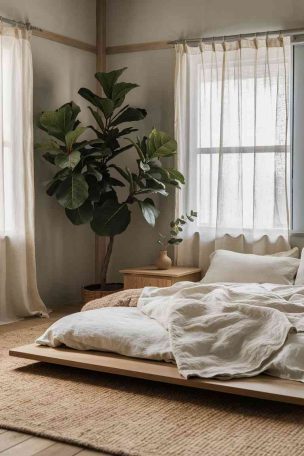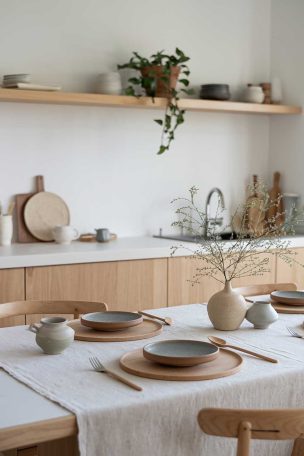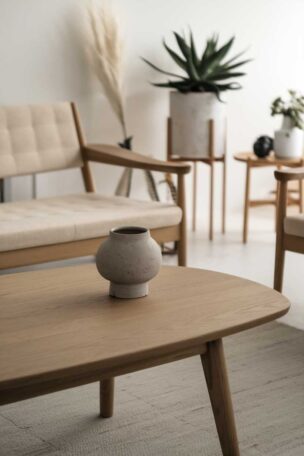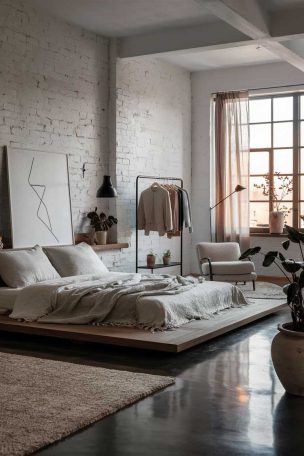Imagine stepping into a bedroom that instantly calms your senses, where clean lines meet soft textures, and every element speaks to nature’s tranquility.
That’s the magic of a Japandi-style bedroom.
This article will guide you through creating a space that marries the minimalist elegance of Japanese design with the cozy functionality of Scandinavian aesthetics, all while keeping nature at its heart.
The Essence of Japandi Design
At its core, Japandi design is about finding beauty in simplicity and connection to the natural world. It’s a style that feels both timeless and contemporary, offering a respite from the chaos of modern life.
Color Palette
The foundation of any Japandi bedroom is its color palette.
Think of the soothing hues you’d find on a misty morning walk through a Scandinavian forest or a serene Japanese garden.

Start with a base of neutral tones—soft whites, warm beiges, and gentle greys.
These colors create a calm backdrop that allows your mind to relax the moment you enter the room.
Then, introduce muted earthy colors as accents—a soft sage green throw pillow here, a dusty blue ceramic vase there.
These nature-inspired hues add depth and interest without overwhelming the senses.
Key Principles
Japandi design revolves around three main principles: minimalism, functionality, and connection to nature.
Every item in your bedroom should serve a purpose, whether it’s functional or brings you joy.
Clutter is the enemy of calm, so be intentional with your choices.
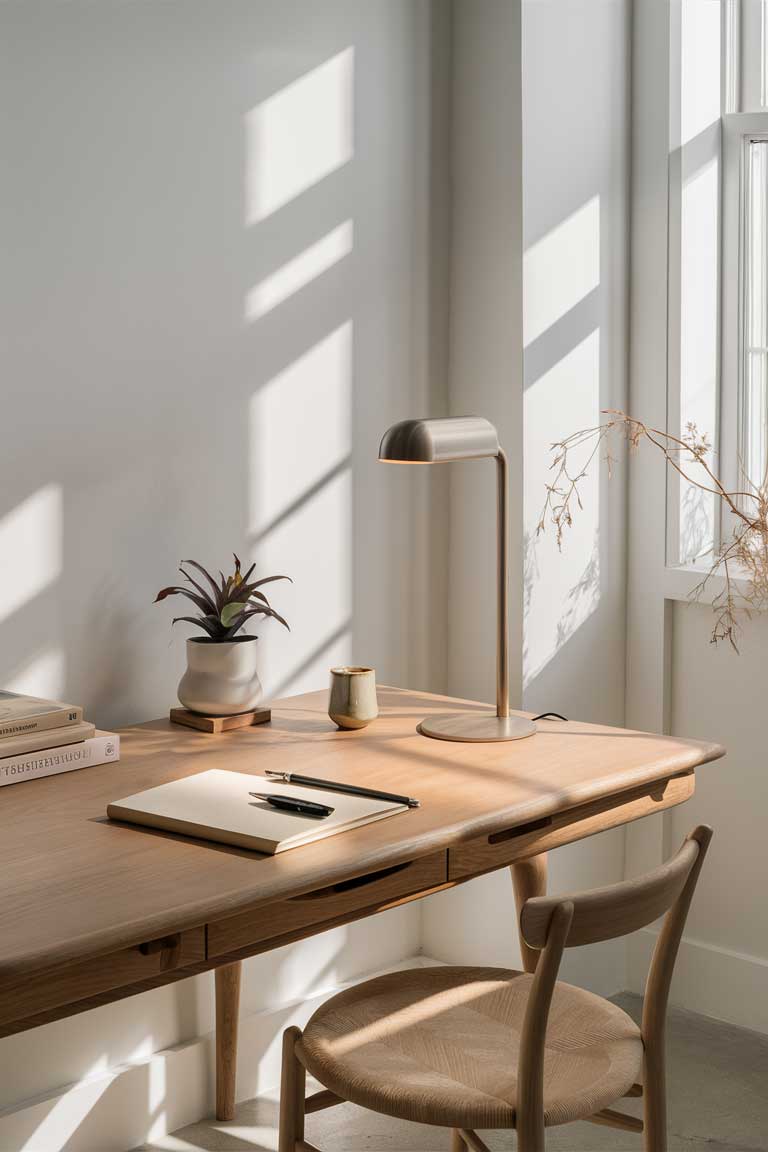
Furniture Choices
Selecting the right furniture is crucial in creating that perfect Japandi vibe. Let’s break it down:
Low-Profile Beds
The bed is the star of any bedroom, and in Japandi design, less is more.
Opt for a low platform bed that seems to float just above the floor. This creates a sense of space and airiness, making your room feel larger and more open.
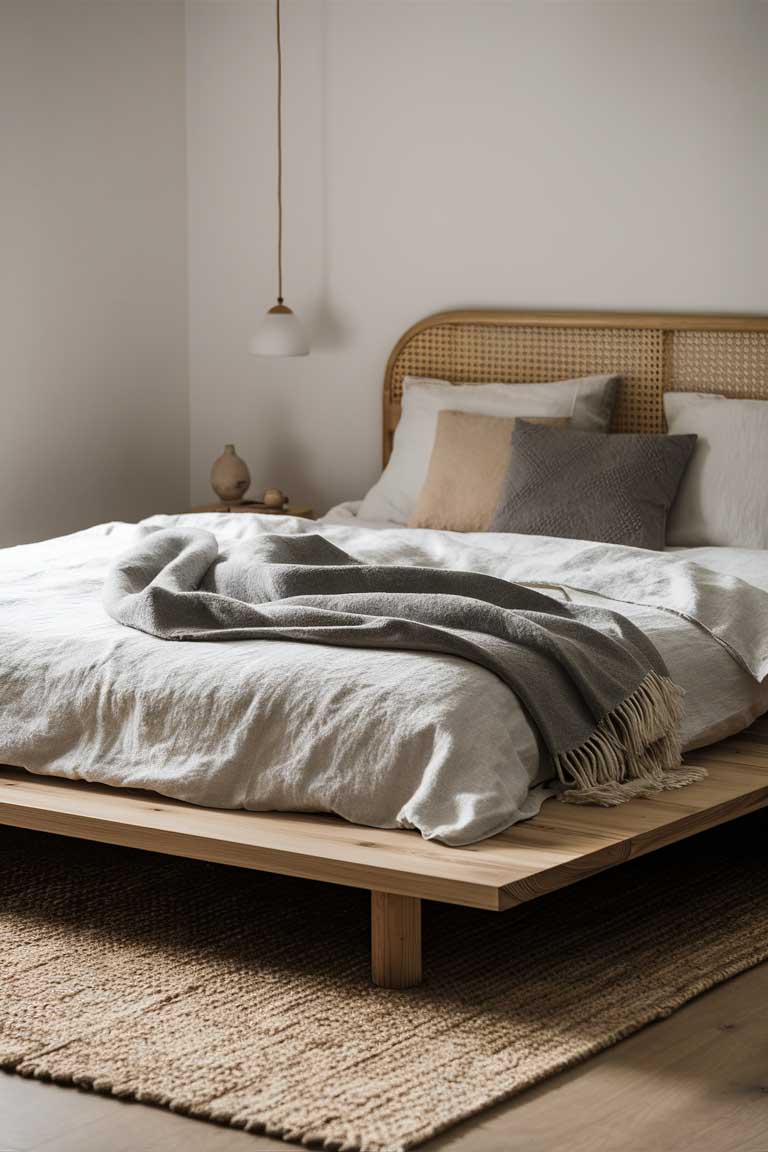
Consider beds made from light woods like oak or bamboo.
These materials bring warmth and a natural element to your space.
If you’re feeling adventurous, a bed crafted from reclaimed wood can add character and tell a story.
Natural Material Furniture
Extend the use of natural materials to your other furniture pieces.
A wooden dresser with clean lines, a rattan accent chair in the corner, or a side table with a stone top – these elements bring the outdoors in and add texture to your space.
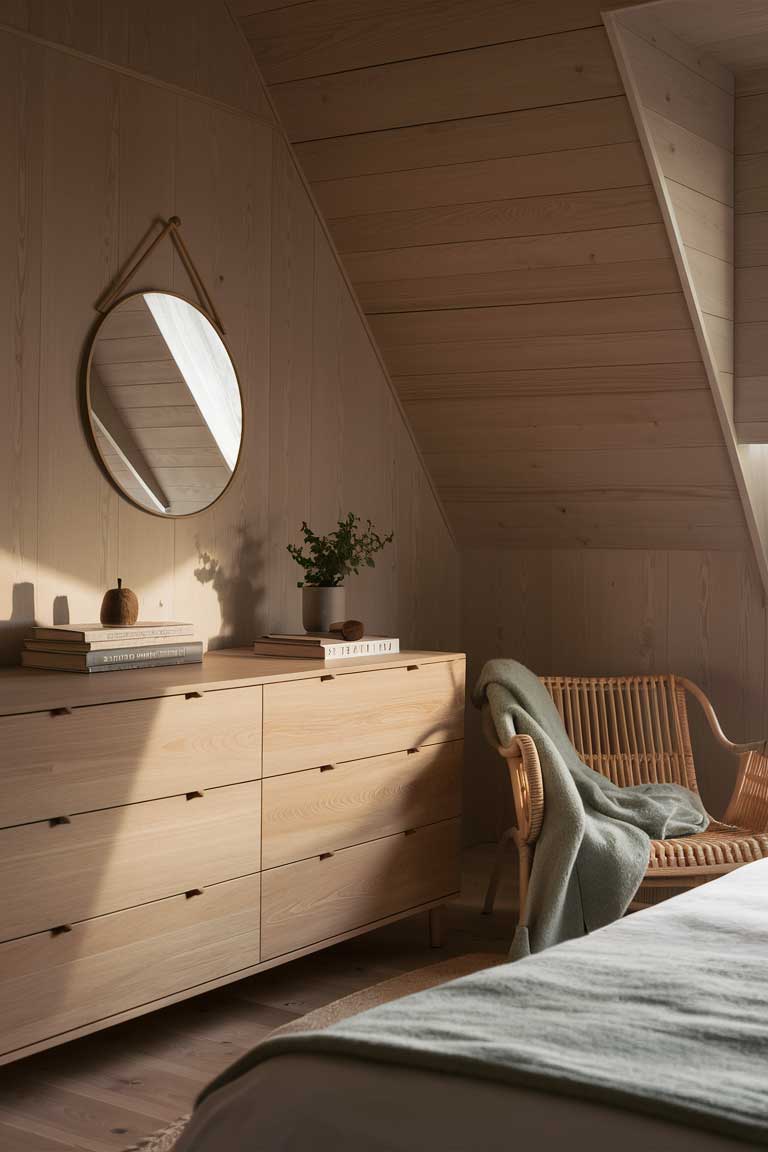
Multifunctional Pieces
In keeping with the minimalist aspect of Japandi design, look for furniture that serves multiple purposes.
A storage bed with built-in drawers eliminates the need for a bulky dresser, and floating nightstands with hidden compartments keep essentials close at hand without cluttering your space.
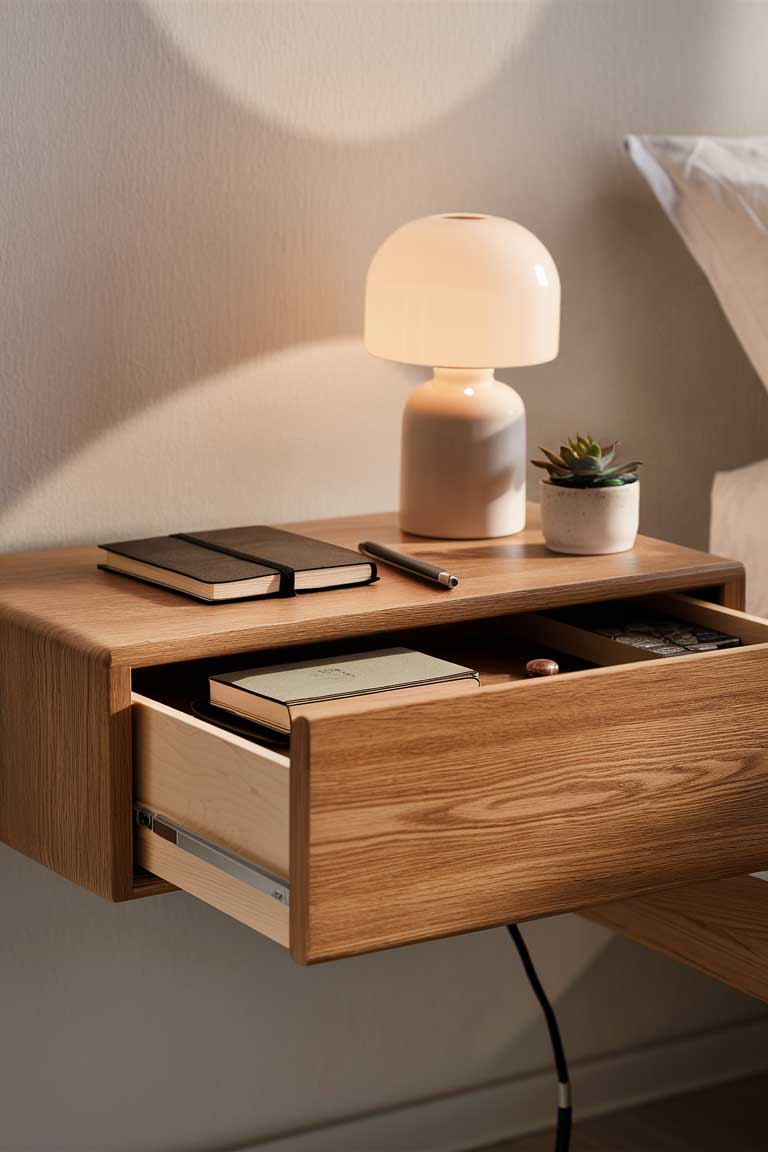
Textiles and Layering
Textiles are where you can bring warmth and comfort to your Japandi bedroom.
The key is to layer textures while keeping within your muted color palette.
Bedding Materials
Start with your bed – it’s the largest textile surface in the room.
Opt for organic cotton sheets in neutral tones like soft white or pale grey.
Top it with a linen duvet cover in a complementary earth tone, perhaps a gentle taupe or muted moss green.

Remember to add a wool blanket for those chilly nights.
Wool’s natural texture adds depth and interest to your bedding ensemble.
Decorative Textiles
Beyond the bed, consider adding a woven jute or sisal rug to ground the space.
These natural fiber rugs add texture underfoot and help define areas in your room.
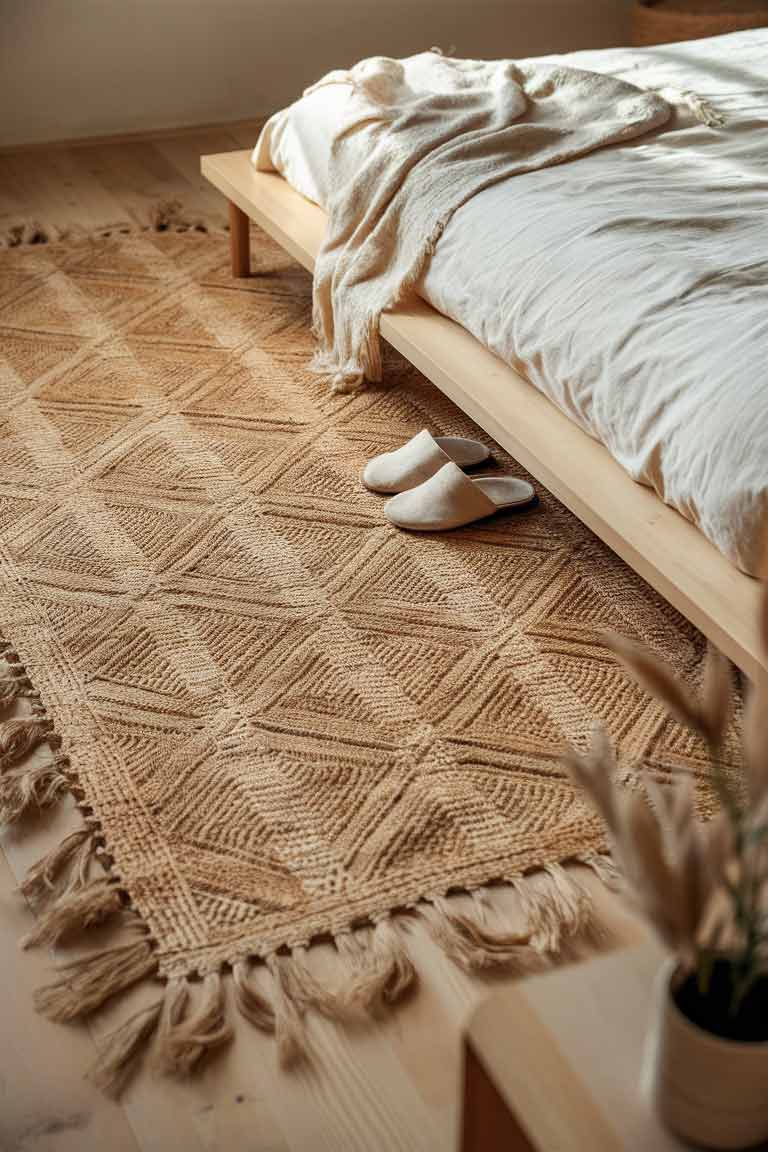
For your windows, bamboo roman shades offer privacy while filtering light beautifully.
When you need more darkness, layer them with simple linen curtains in a neutral tone.
Finish off with a few cushions in subtle botanical prints or solid earthy tones. Remember, the goal is comfort and serenity, not a cluttered pillow display.
Wall Treatments and Art
Your walls are a canvas for expressing the Japandi aesthetic. Keep them simple but interesting.
Natural Wood Features
Consider adding a slatted accent wall behind your bed. This adds warmth and texture without overwhelming the space.
Alternatively, a reclaimed wood headboard can serve as a stunning focal point.
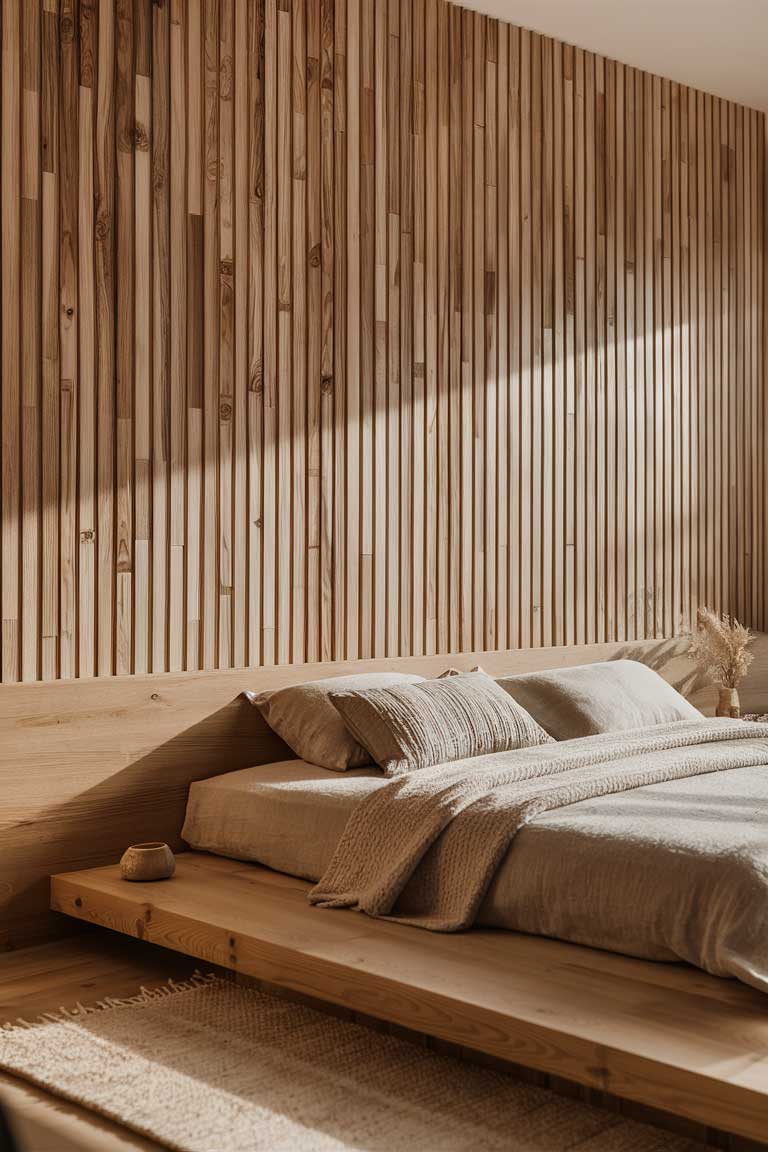
Floating wooden shelves provide a perfect spot for displaying a few cherished items or books.
Keep these displays minimal – remember, in Japandi design, negative space is just as important as the objects you choose to showcase.
Nature-Inspired Artwork
When it comes to art, less is more. A large minimalist landscape print can set a serene tone for the entire room.
For a touch of Eastern influence, consider a Japanese calligraphy scroll.
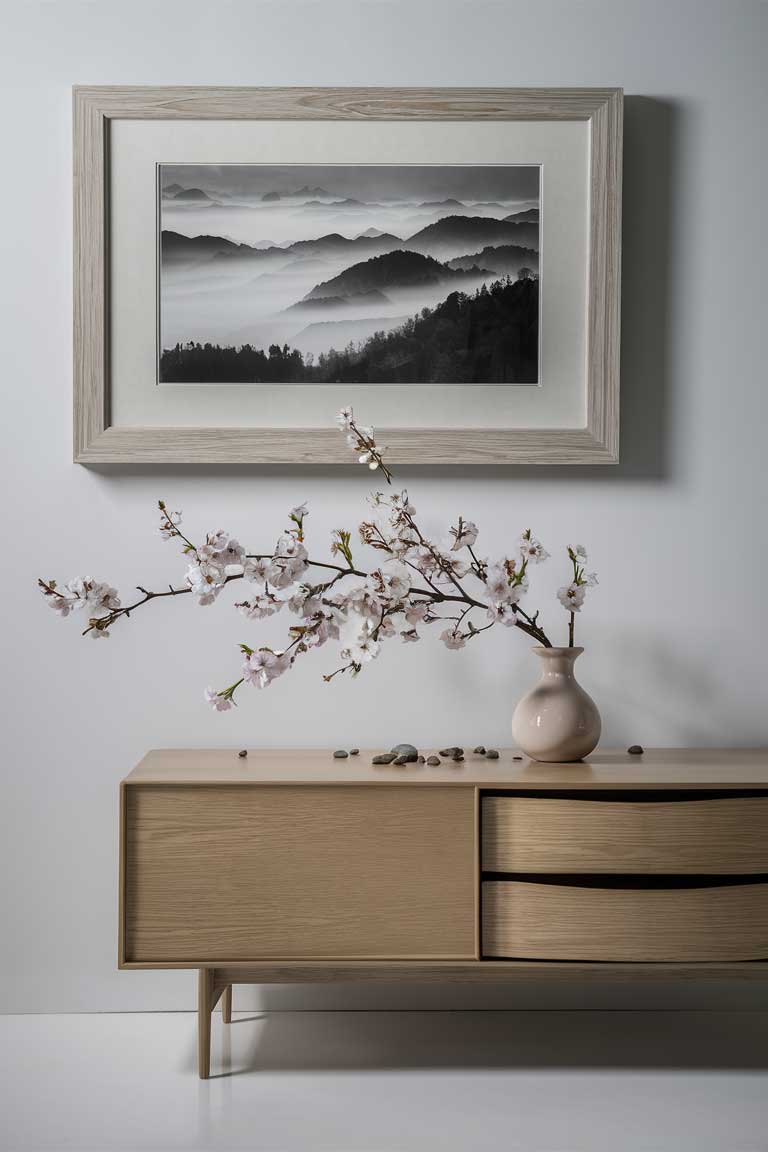
For a personal touch, try creating your own pressed leaf art.
Gather leaves from your garden, press them, and arrange them in simple frames. This adds a natural element to your decor and connects your space to the world outside your window.
Lighting for Ambiance
Lighting is crucial in creating the right atmosphere in your Japandi bedroom.
The goal is to mimic the soft, diffused light of nature.
Natural Light Maximization
Start by maximizing natural light. Use sheer linen curtains to filter sunlight, creating a soft glow throughout the day.
Strategically placed mirrors can help bounce light around the room, making it feel brighter and more spacious.

Layered Artificial Lighting
For artificial lighting, think in layers.
A wooden pendant light can be a beautiful focal point while providing illumination.
Complement this with bamboo table lamps on your nightstands for a warm, localized glow.
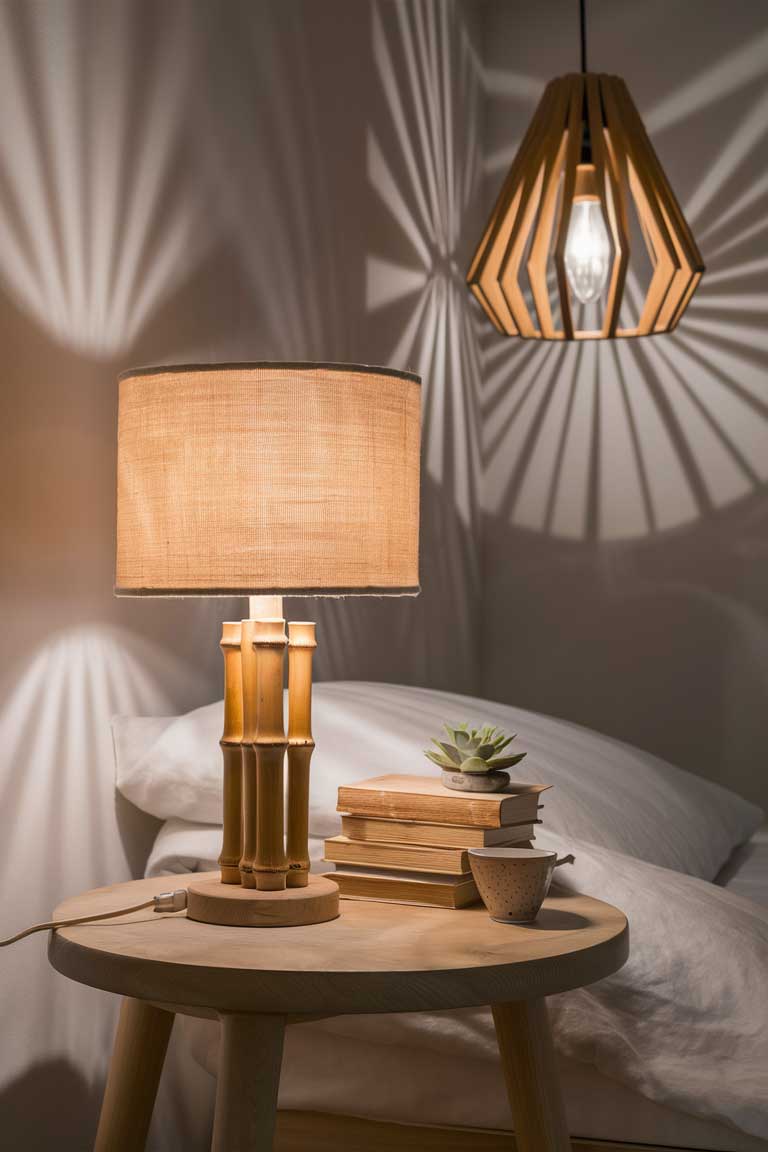
Consider adding LED strips behind your headboard or under floating shelves for subtle, ambient lighting.
This creates a cozy atmosphere perfect for winding down in the evening.
Bringing Nature Indoors
One of the key aspects of Japandi design is its strong connection to nature.
Bringing outdoor elements into your bedroom enhances the aesthetic and contributes to a sense of calm and well-being.
Indoor Plants
Large statement plants like a Fiddle Leaf Fig or a Bird of Paradise can act as living sculptures, adding height and a vibrant touch of green to your space.
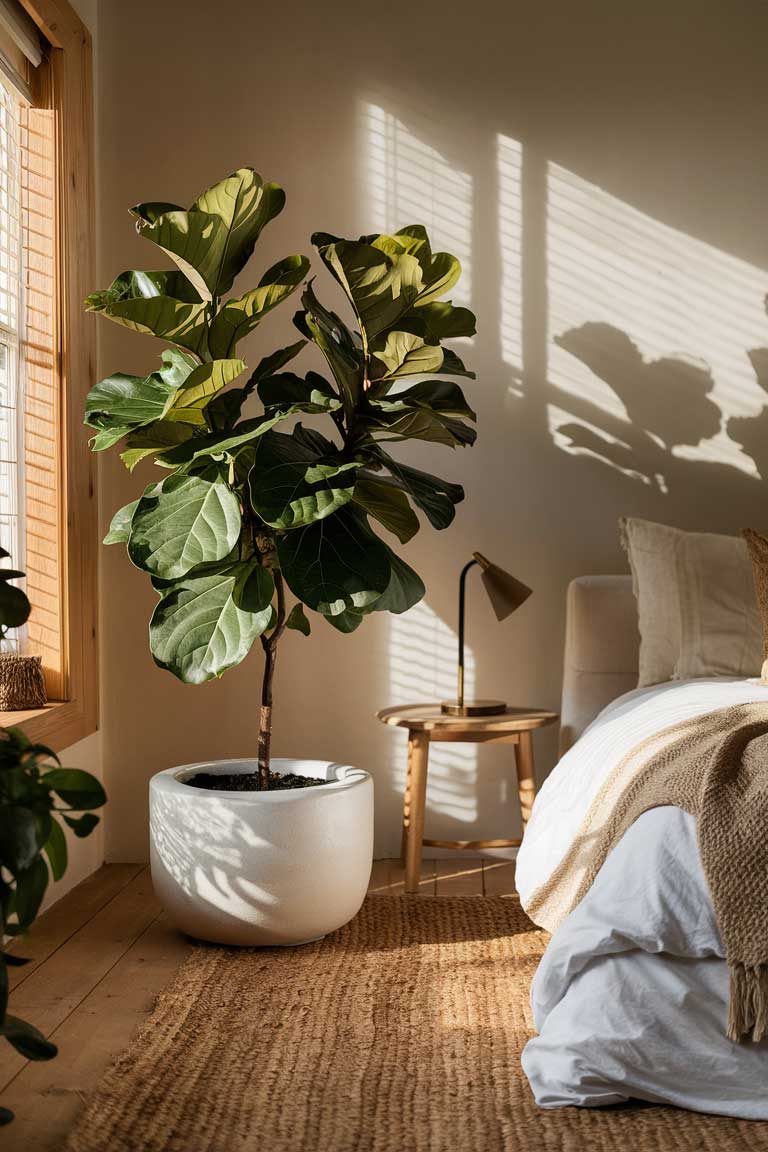
Don’t forget about air-purifying options like Snake Plants or Pothos.
These hardy plants look great and help clean the air while you sleep.
For a touch of Japanese influence, consider adding a small bonsai tree. Its sculptural form embodies the essence of nature in miniature, perfect for a bedside table or desk.
Natural Decor Elements
Incorporate other natural elements to reinforce the connection to the outdoors.
A piece of driftwood can become a unique wall hanging, while a collection of smooth river stones can serve as a minimalist sculpture.
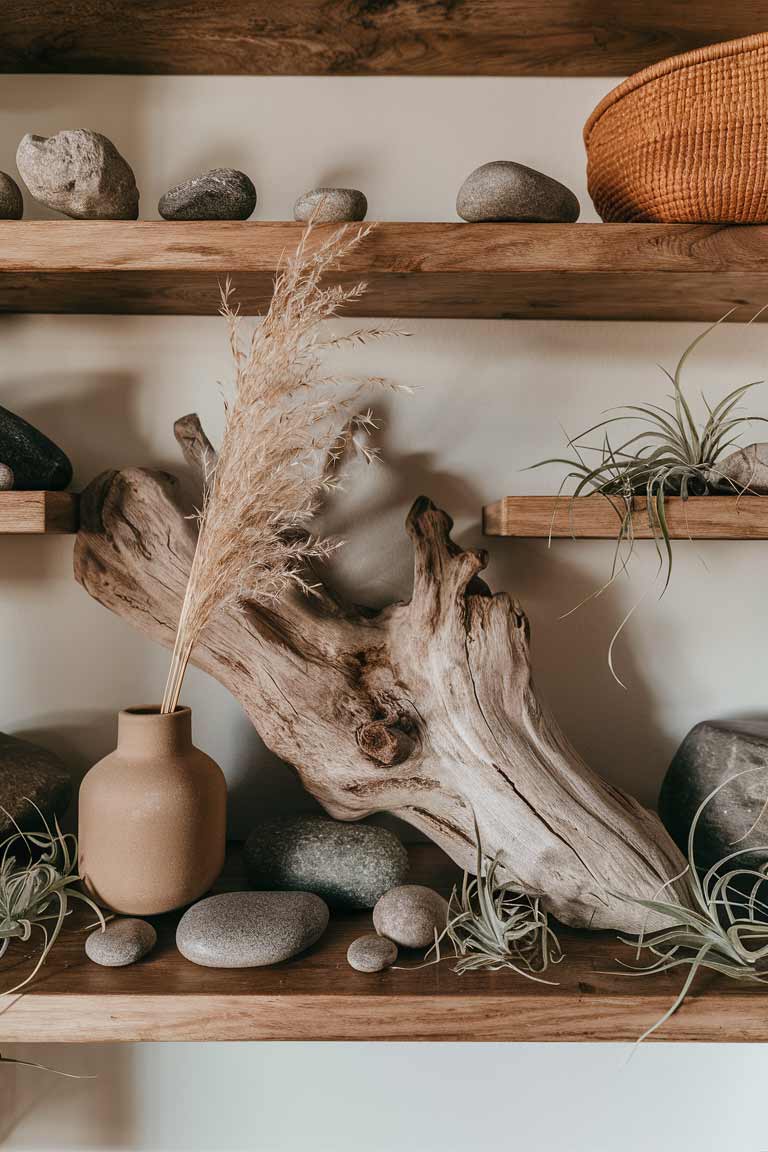
Ceramic vases filled with dried pampas grass or a single branch can add height and visual interest without the maintenance required by fresh flowers.
Storage and Organization
In a Japandi bedroom, smart storage solutions are essential for maintaining a clutter-free, serene environment.
Hidden Storage Solutions
Look for furniture pieces with hidden storage.
A bed with built-in drawers underneath can eliminate the need for a large dresser, keeping your floor space open and uncluttered.
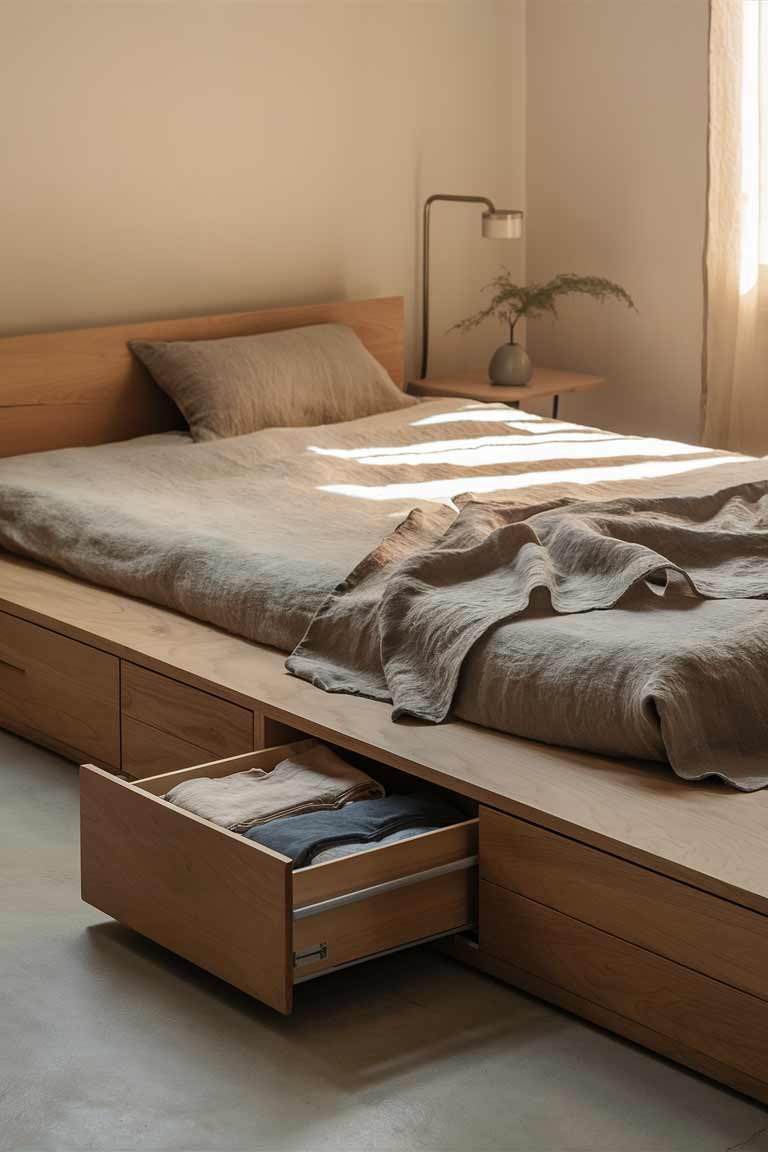
Wall-mounted cabinets in light wood can provide additional storage without taking up floor space.
Their simple, streamlined design adds to the room’s serene atmosphere rather than detracting from it.
For smaller items, consider using woven baskets. These add texture and warmth while keeping things organized and out of sight.
Minimalist Display Areas
While the goal is to keep surfaces clear, a few carefully chosen display areas can add personality to your space.
Open shelving with a curated selection of books, ceramics, or natural objects can create visual interest without feeling cluttered.
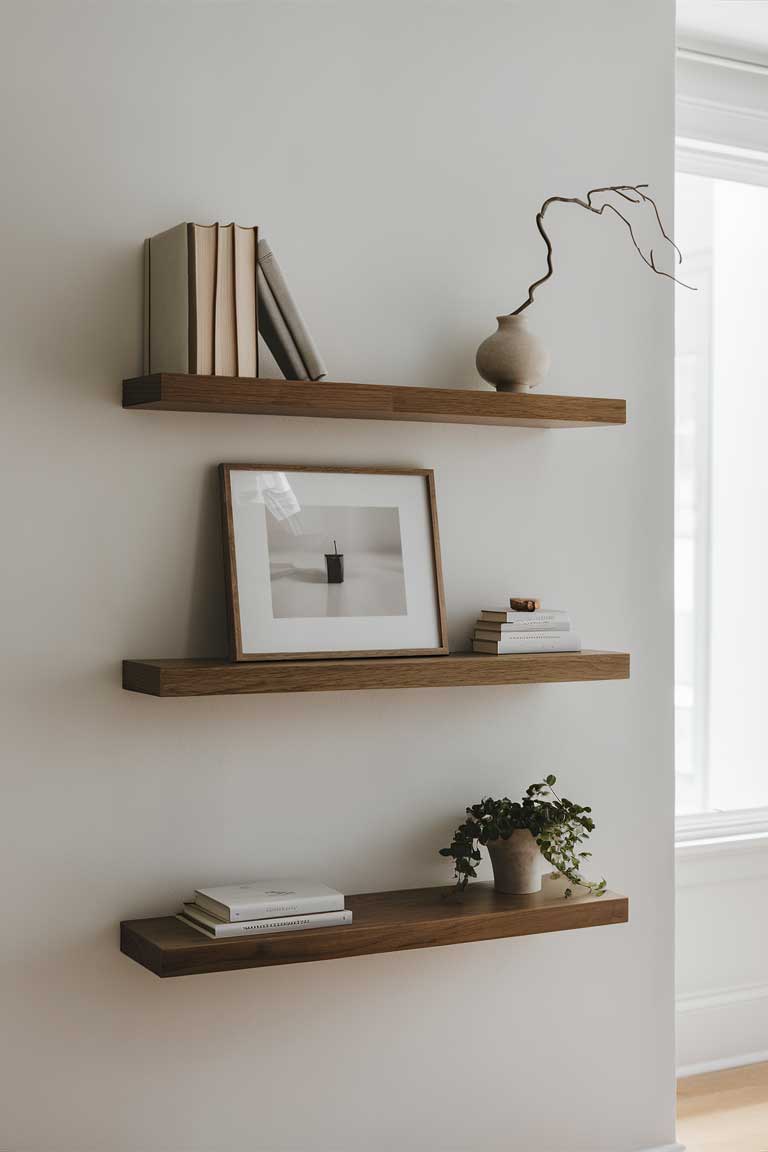
Glass-front cabinets can be a beautiful way to display collections while keeping them dust-free.
Remember to keep the displays sparse – in Japandi design, less is more.
Creating a Relaxation Corner
Every bedroom needs a spot dedicated to relaxation beyond just the bed.
In a Japandi-style room, this area should embody tranquility and mindfulness.
Reading Nook
Carve out a cozy reading nook with a low-profile rattan chair and a soft wool throw blanket.
Add a minimalist floor lamp for focused lighting, perfect for those late-night reading sessions.
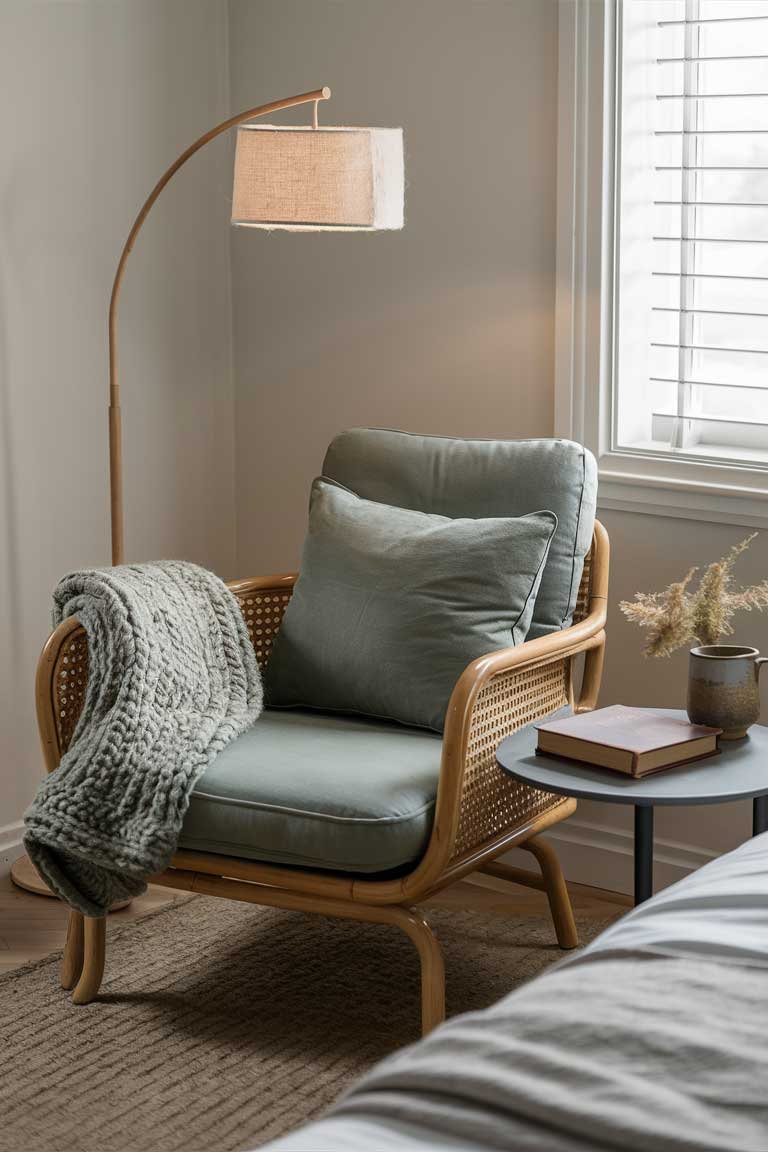
Meditation Space
Those who practice meditation or yoga should consider creating a dedicated space.
A tatami mat area can serve as the perfect spot for your practice.
Add a low wooden meditation stool and perhaps a simple zen sand garden for contemplative moments.
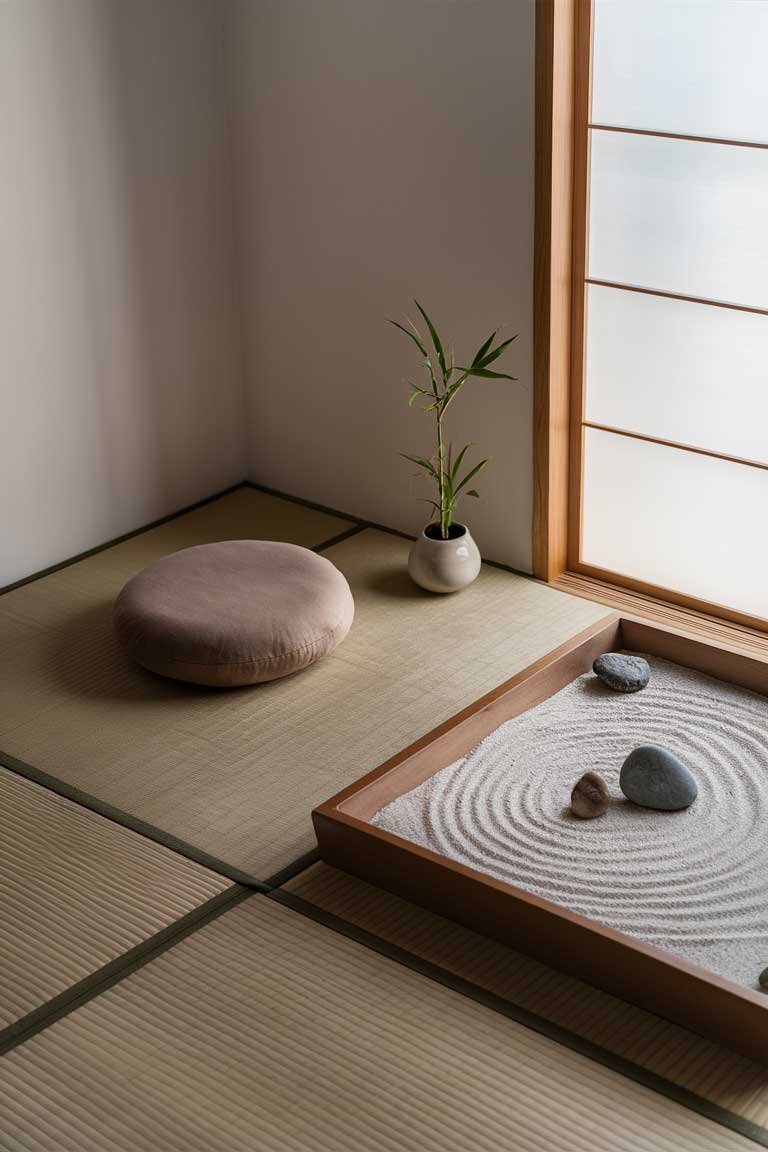
Accessorizing with Intent
In Japandi design, every accessory should earn its place.
Choose beautiful and functional items, and don’t be afraid to leave some spaces empty.
Handcrafted Elements
Incorporate handcrafted elements to add warmth and character to your space.
A ceramic incense holder, a wooden tea tray, or a hand-woven wall hanging can all add texture and interest while staying true to the Japandi aesthetic.
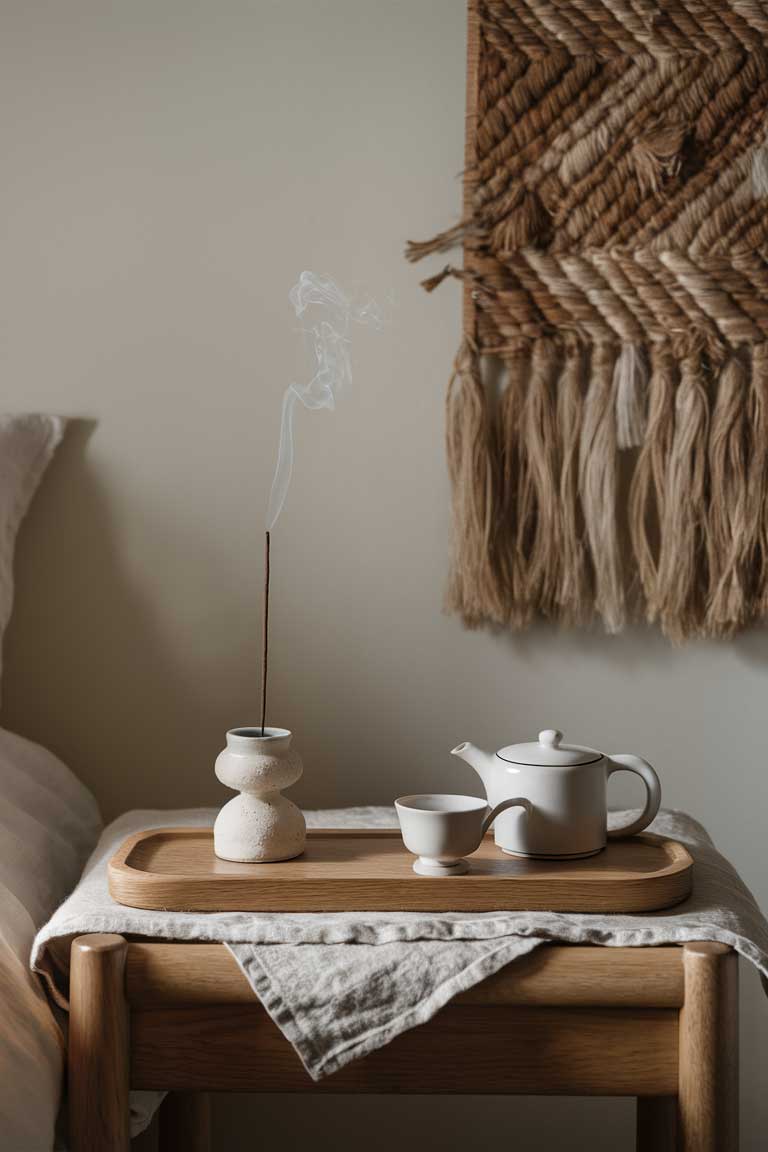
Functional Decor
Look for decor items that serve a purpose.
A minimalist analog clock can be both a timepiece and a piece of wall art. Natural stone coasters protect your surfaces while adding an organic touch.
A wooden room divider screen can create separate areas in your bedroom while adding architectural interest.
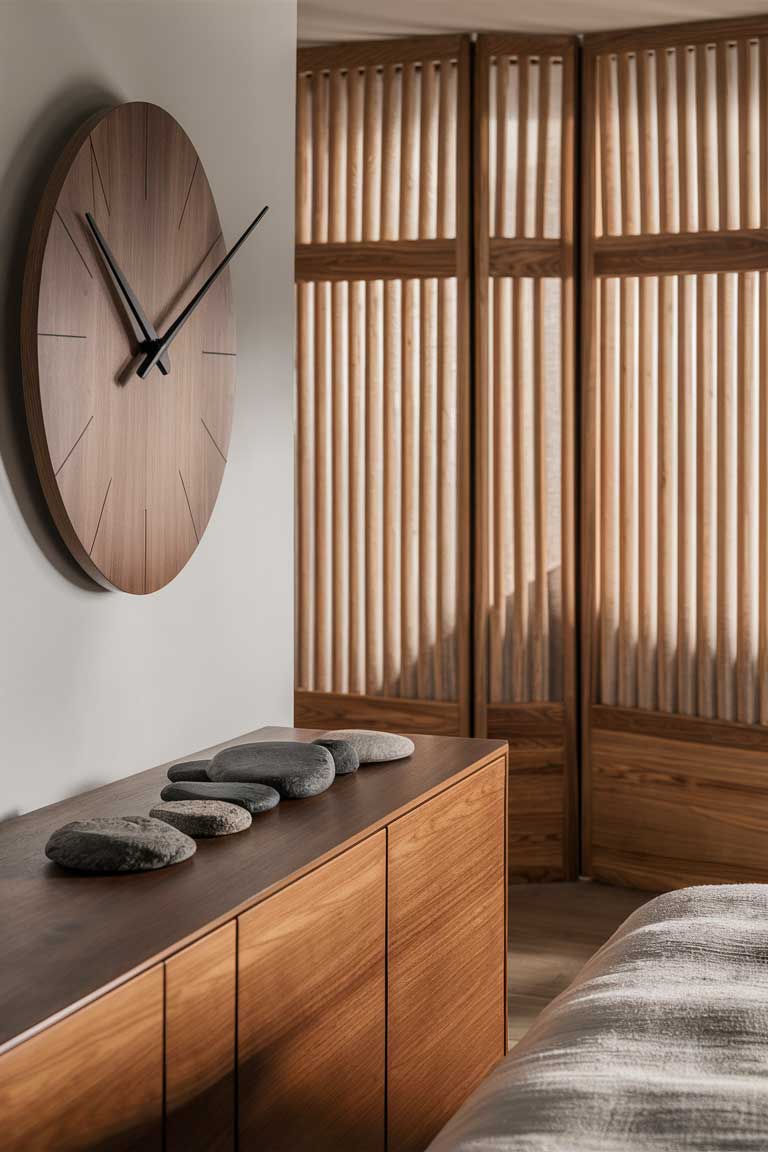
Conclusion
Creating a nature-inspired Japandi bedroom is about more than just following design rules.
It’s about crafting a space that resonates with your soul, a sanctuary that helps you reconnect with nature and find peace in simplicity.
Remember, the beauty of the Japandi style lies in its flexibility.
Feel free to personalize your space while maintaining the core principles of minimalism, functionality, and connection to nature.
Whether through the soft rustle of linen curtains, the warm glow of a bamboo lamp, or the quiet presence of a treasured plant, let your bedroom reflect what tranquility means to you.
In our fast-paced world, having a serene retreat to return to each night is more important than ever.
By embracing the Japandi aesthetic, you’re not just designing a bedroom – you’re creating a space that nurtures your well-being and helps you start and end each day in harmony with nature.
So, take a deep breath, look around your space, and imagine the possibilities.
Your journey to a calmer, more centered life might begin with the transformation of your bedroom. Here’s to creating a space where serenity isn’t just a design choice but a way of life.

